ARTS DOMAIN
Jess Gray
Arts Instructional Leader
The Arts enable students to develop their creative and expressive capacities by learning about the different practices, disciplines and traditions that have shaped the expression of culture locally, nationally and globally.
Students are both artist and audience in the Arts. They make, respond and learn to appreciate the specific ways this occurs in different disciplines including the performing arts and the world of visual representation and expression.
The Arts includes Dance, Drama, Media Arts, Music, Visual Arts and Visual Communication Design.
Art Making & Exhibiting 3-4
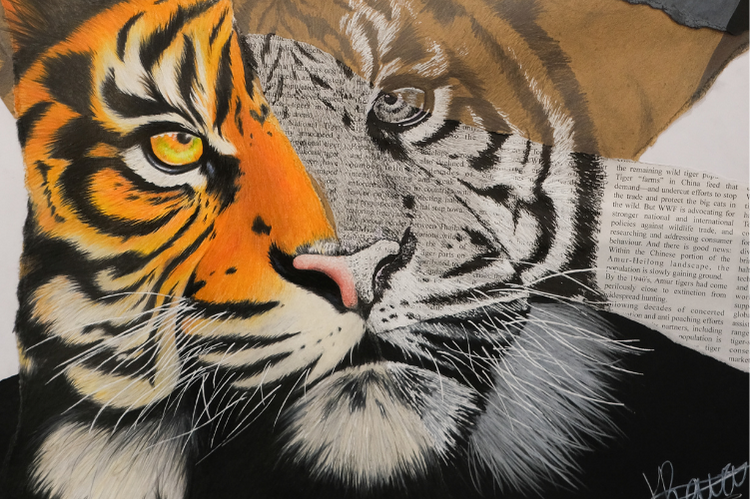
- Trial and explore a range of art making materials and techniques
- Make two final artworks of your choice
- Investigate the processes and influences of artists
Subject Code: V2AAE
Year Level: 12
Unit 3: Collect, extend and connect
We actively engage in art making using materials, techniques and processes. We explore contexts, subject matter and ideas to develop artworks in imaginative and creative ways.
What does this mean for me?
You collect information from artists and artworks in specific art forms to develop subject matter and ideas in your own art making. You will also research and plan an exhibition of the artworks of three artists.
Assessment
- School assessed coursework 5%
- School assessed task 30%
Unit 4: Consolidate, present and conserve
You make connections to the artworks you have made in Unit 3, consolidating and extending your ideas and art making to further refine and resolve artworks in specific art forms.
What does this mean for me?
You will refine and resolve at least one finished artwork in a specific art form and document the materials, techniques and processes used in art making. You will plan and display at least one finished artwork in a specific art form and present a critique while considering conservation and care of artworks.
Assessment
- School assessed coursework 5%
- School assessed task 30%
- End of year exam (Unit 3 & 4) 30%
What sort of student would like Art Making and Exhibiting?
Someone who enjoys visual arts, photography and design.
Pre-requisites
To undertake Unit 3 and 4, it is preferable to have completed Unit 1 and 2.
Other considerations
Students may be required to purchase some of their own materials.
Media 3-4
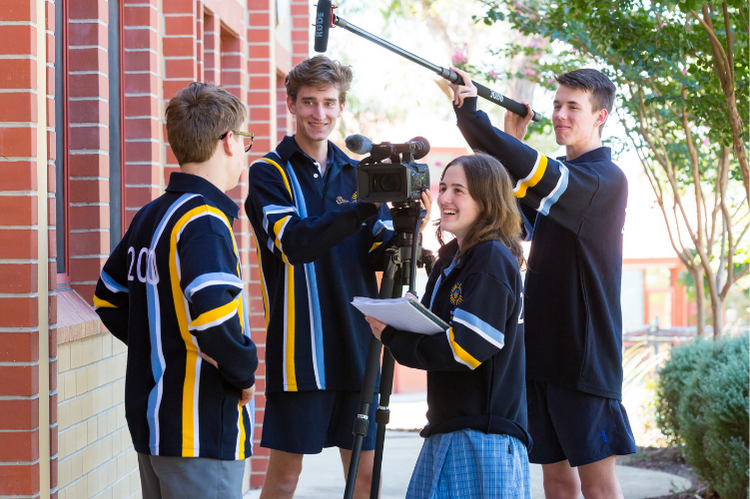
- Analyse audience reactions to films
- Make your own individual narrative media product
- Study the impact of media on society
Subject Code: V2AME
Year Level: 12
Unit 3: Media narratives, contexts and pre-production
We analyse the construction of media narratives; discuss audience engagement, consumption and reading of narratives; and analyse the relationship between narratives and the contexts in which they are produced. We also research and document aspects of a media form, codes, narrative conventions, style, genre, story and plot to inform the plan for a media production, then develop and document a media pre-production plan demonstrating student concepts and intentions in a selected media form for a specified audience.
What does this mean for me?
If you like analysing films and creating your own media production (can be film, photography, animation, print media or convergent media forms) then you shall enjoy this unit.
Assessment
- Written analysis of a narrative product
- Two technical exercises relevant to the specifications identified in the production of a design plan preparation of a media production design plan
Unit 4: Media production; agency and control in and of the media
You bring your media production planned in Unit 3 to life! We also explore the relationship between the media and audiences, focusing on the opportunities and challenges afforded by current developments in the media industry. Our class considers the nature of communication between the media and audiences, explores the capacity of the media to be used by governments, institutions and audiences, and analyses the role of the Australian government in regulating the media.
What does this mean for me?
You film, photograph or produce your media production and export it or print it to present it as completed. If you enjoy doing hands-on production work then you shall enjoy this unit. We also engage in theoretical study of the media industry and its developments plus the theories behind media regulation and influence.
Assessment
- Final production of your media product
- Written analysis (SAC) of media influences and challenges
What sort of student would like Media?
Someone who:
- Is interested in working in the media/communications industry in the future
- Enjoys planning and creating their own media production (a choice of film, photography, animation or print)
- Enjoys studies of Psychology, Sociology, History and English.
Pre-requisites
Preferably Media Units 1 & 2.
Music Performance 3-4
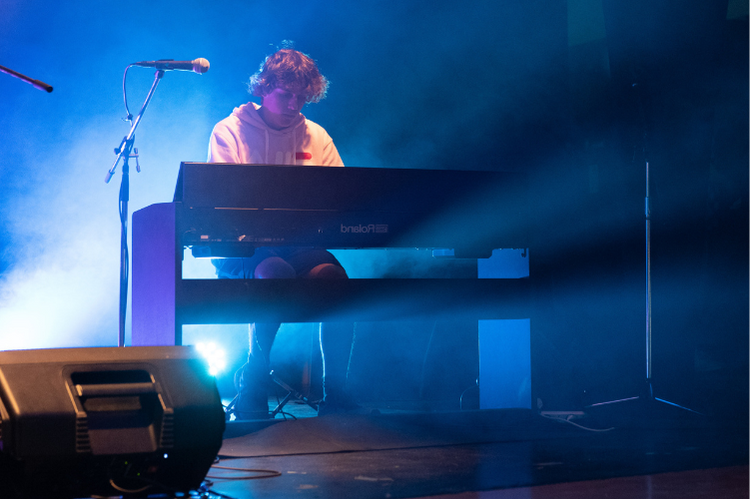
- Solo and group performances
- Familiarise yourself with music language
- Grasp instrumental techniques
Subject Code: V2AMP
Year Level: 12
Option 1 - Unit 3-4: Music Contemporary performance
This study offers a pathway for students whose performance practice includes embellishment and/or improvisation, uses collaborative and aural practices in learning, often takes recordings as a primary text and projects a personal voice.
Students may present with any instrument or combination of instruments which will be suitable to convey understanding of the key knowledge and application of key skills learnt, with styles including (but not limited to) rock, pop, jazz. EDM, country, funk and R&B.
Students prepare a program for assessment in a live performance. They may be assessed as primarily a member of a group or as a solo performer. All performance must include at least one ensemble work with another live musician and an original work created by an Australian artist since 1990. All performances must include a personally reimagined version of an existing work. Original works may also be included in the program.
Option 2 - Unit 3-4: Music repertoire performance
This study is designed for students whose musical interests are grounded in the recreation and interpretation of notated musical works, and who wish to gain and share knowledge of musical styles and performance practices.
Students may present on any instrument for which there is an established repertoire of notated works.
The works selected for assessment must have sufficient range to convey understanding of the key knowledge and application of the key skills for Outcome 1. Music styles in this study may include, (but are not limited to) early music, baroque, classical, romantic, 20th and 21st century art music styles, musical theatre, and classical music styles outside the Western tradition.
The recital programme for final assessment will be 20 minutes in length. Students may present primarily as a soloist or as an ensemble musician. However, students must present at least one ensemble work (that is, a performance with at least one other live musician) as part of their final program and include at least one work created since 1990 by an Australian composer.
Programs may also consist entirely of ensemble works, with one or more students being assessed.
One work in the final program must be selected from the separately published Prescribed List.
What does this mean for me?
- You need to be a motivated and committed musician
- You may need a private teacher to maximise your potential - speak to Luke Godfrey, our Music Director, about accessing additional music tuition.
Assessment
Music contemporary performance
- AOS 1: Written/oral task explaining process for selection of performance program
- AOS 2: Preparing for Performance: technical and expressive exercises and discussion
- AOS 3: Written assessment – structured responses, practical demonstration of music language, knowledge and skills
Music repertoire performance
- AOS 1: Written/oral task explaining process for selection of performance program
- AOS 2: Preparing for Performance: technical and expressive exercises and discussion
- AOS 3: Written assessment – structured responses, practical demonstration of music language, knowledge and skills
What sort of student would like Music Performance?
- Someone who wants to extend themselves on their instrument of study
- This is a unit for musicians who have a love for playing and wish to build their performance skills, experience and understanding.
Pre-requisites
For Units 3-4, completion of Pathways and Year 11 Music units, a private instrumental teacher, and participation in the College’s band and choral programs.
Other considerations
This unit would not suit a beginner.
Theatre Studies 3-4
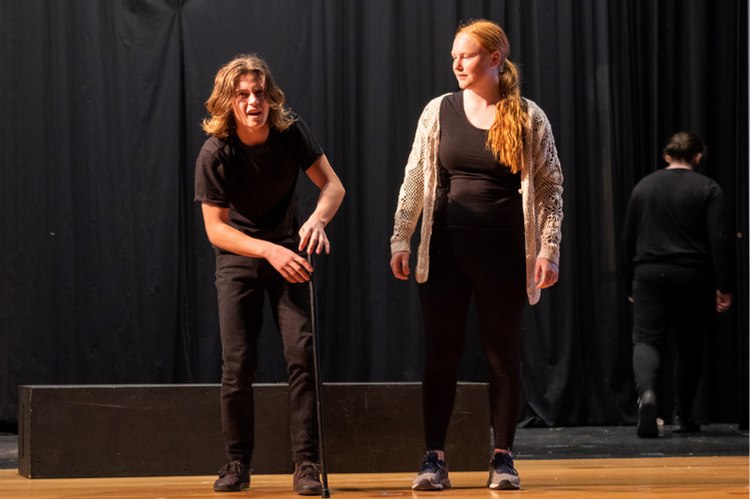
- Develop, present and analyse a performance
- Script interpretation
- Play analysis
Subject Code: V2ADT
Year Level: 12
Unit 3: Producing theatre
In Unit 3, students develop an interpretation of a script through the three stages of the theatre production process: planning, development and presentation. Students specialise in two production roles, working collaboratively, creatively and imaginatively to realise the production of a script.
Assessment
- Ongoing developmental contributions to creative interpretation of a script across all three stages of the production process through collaborative work in two production roles.
- Analysis and evaluation
- Documentation that outlines the concepts and ideas for a creative interpretation of excerpts from a script- essay or structured questions
Unit 4: Presenting an interpretation
In Unit 4, students study a scene and an associated monologue. They initially develop an interpretation of the prescribed scene. This work includes exploring theatrical possibilities and using dramaturgy across the three stages of the production process. Students then develop a creative and imaginative interpretation of the monologue that is embedded in the specified scene. To realise their interpretation, they work in production roles as an actor and director, or as a designer..
Assessment
- End-of-year monologue examination
What sort of student would like Theatre Studies?
Someone who enjoys performing and working with others to create characters and scripts. You should like investigating character types and exploring a variety of non-naturalistic performance styles and techniques.
Pre-requisites
Pathways and/or Theatre Studies Unit 1-2.
Other considerations
- Effective time management and strong organisational skills are essential
- Much of the script-writing and rehearsals will take place outside of class time
- You must also be available to attend excursions.
Visual Communication Design 3-4
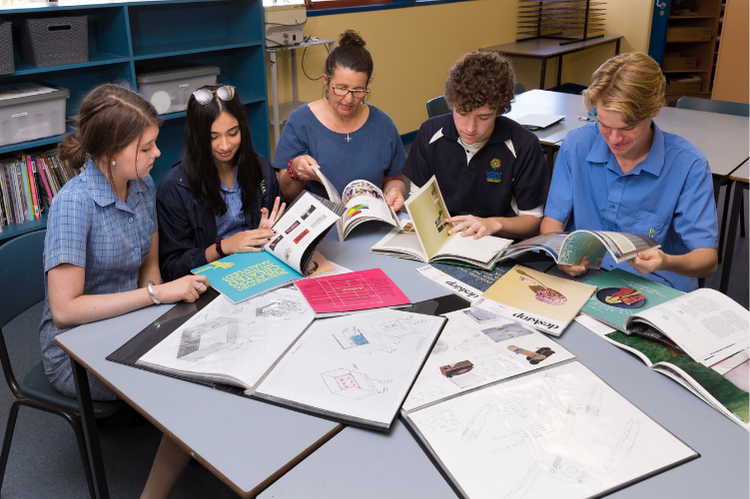
- Understand the process of a professional designer
- Develop a folio addressing two design needs
- Investigate different media and materials to create visual communications
Subject Code: V2AVC
Year Level: 12
Unit 3: Visual communication design practices
In this unit students explore and experience the ways in which designers work, while also analysing the work that they design. Through a study of contemporary designers practising in one or more fields of design practice, students gain deep insights into the processes used to design messages, objects, environments and/or interactive experiences.
Unit 4: Delivering Design Solutions
In this unit students continue to explore the VCD design process, resolving design concepts and presenting solutions for two distinct communication needs. Ideas developed in Unit 3, Outcome 3 are evaluated, selected, refined and shared with others for further review. An iterative cycle is undertaken as students rework ideas, revisit research and review design criteria defined in the brief. Manual and digital methods, media and materials are explored together with design elements and principles, and concepts tested using models, mock-ups or low-fidelity prototypes.
Assessment
Unit 3
- AOS 1 (SAC): A written report or an annotated visual report or an online presentation and two practical design exercises
- AOS 2 (SAC): A written report or an annotated visual report or an online presentation
- AOS 3 (SAT): A written brief, research, generation of ideas, presentation of critique, and a reflective evaluation
Unit 4
- AOS 1 (SAT): A folio of work including documentation of design process, evaluation of design concepts; delivery of pitch
- AOS 2 (SAT): Two final presentations, use of visual language
External assessment: End-of-year examination
What sort of student would like Visual Communication Design?
Visual Communication Design is a useful pathway for students wanting a career in any type of design such as; graphic, interior, architectural, fashion, environmental, landscape and industrial design.
Pre-requisites
Visual Communication Unit 1-2 would be useful but not essential. Some knowledge and interest in using Adobe Photoshop and Illustrator is strongly advised.
Other considerations
Visual Communication Design is a useful pathway for students wanting a career in any type of design such as; graphic, interior, architectural, fashion, environmental, landscape and industrial design.
